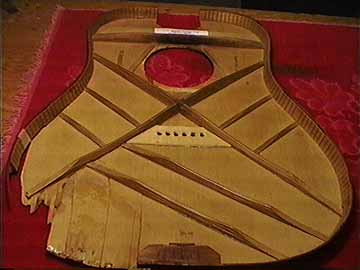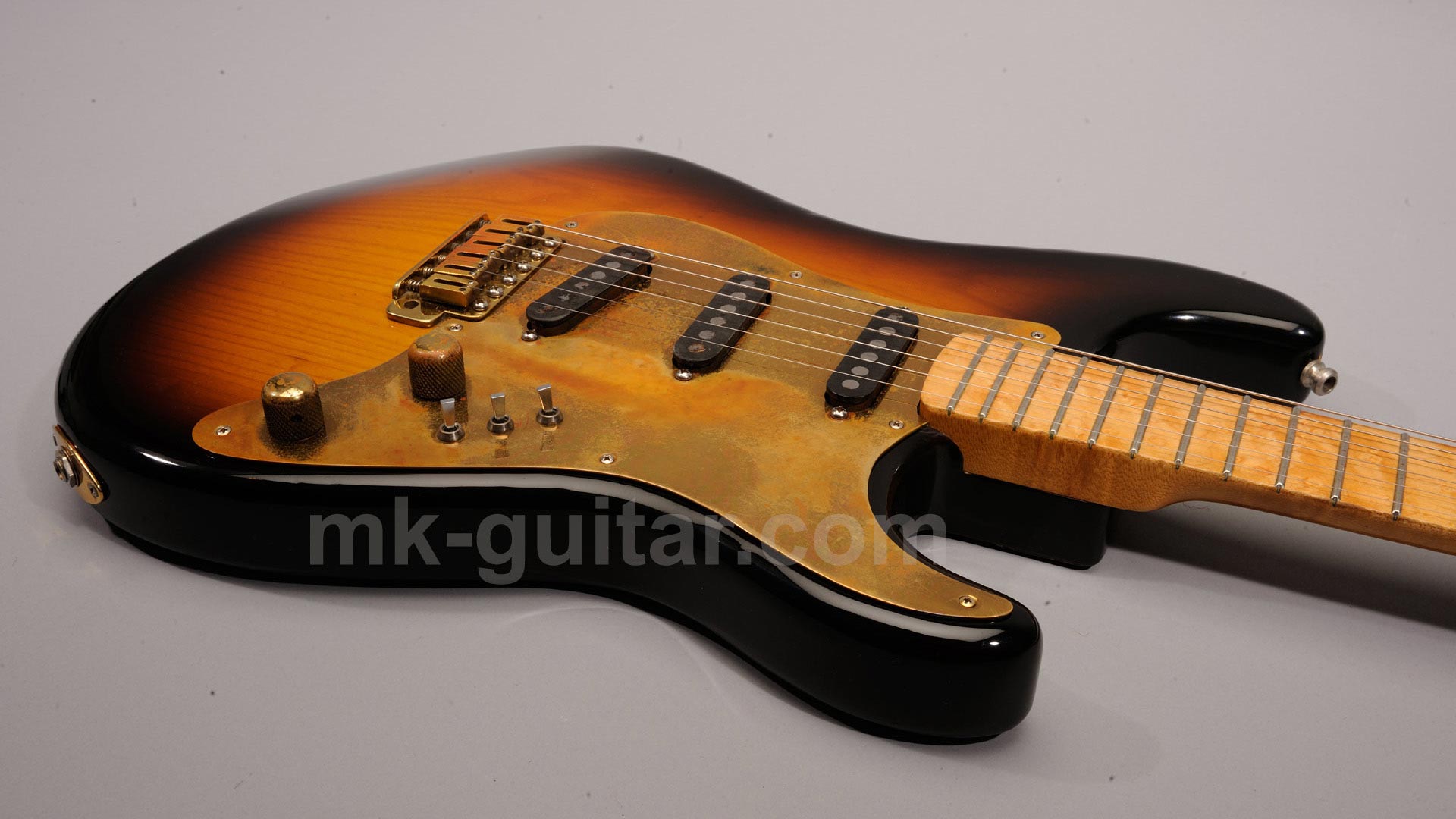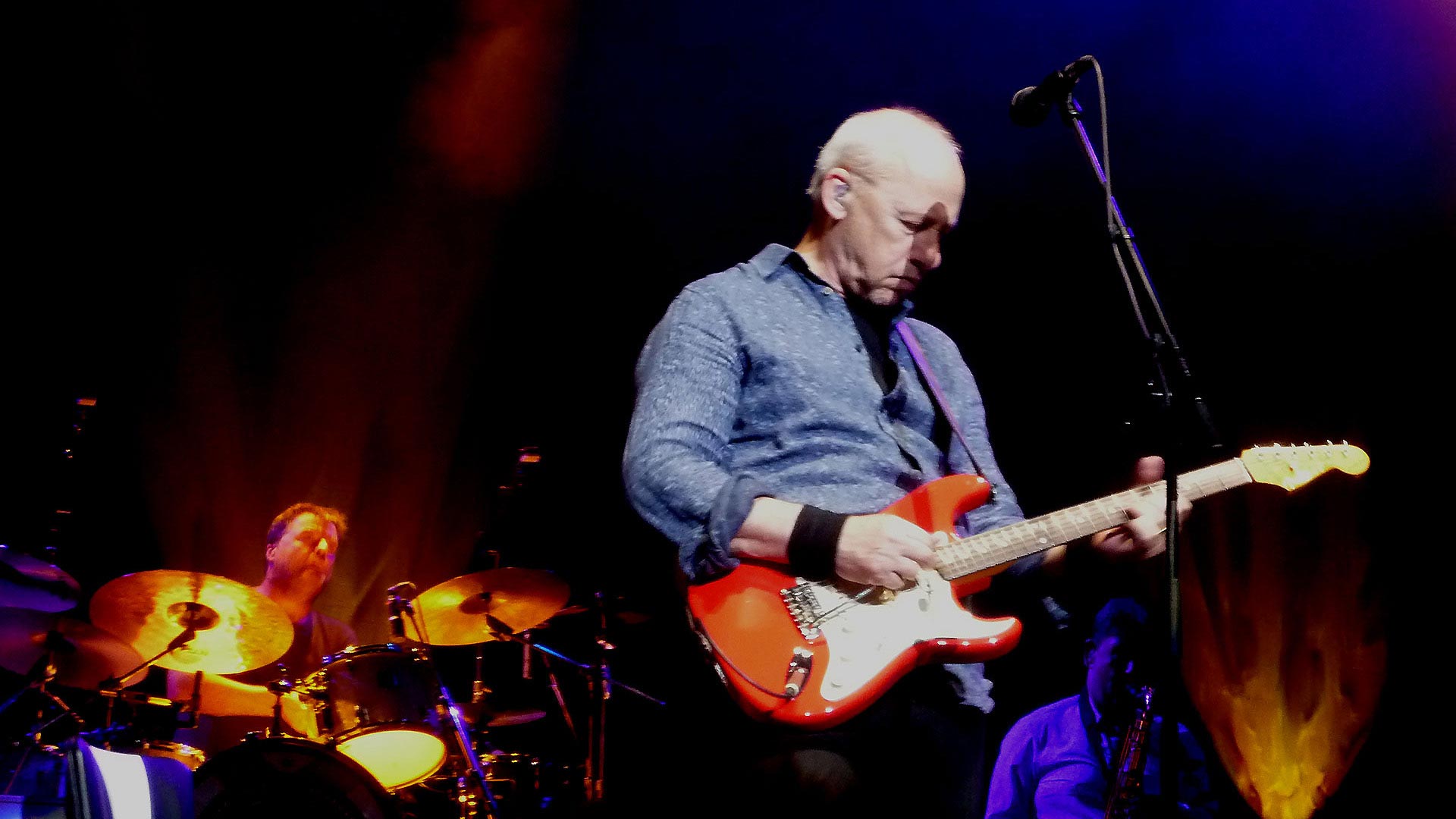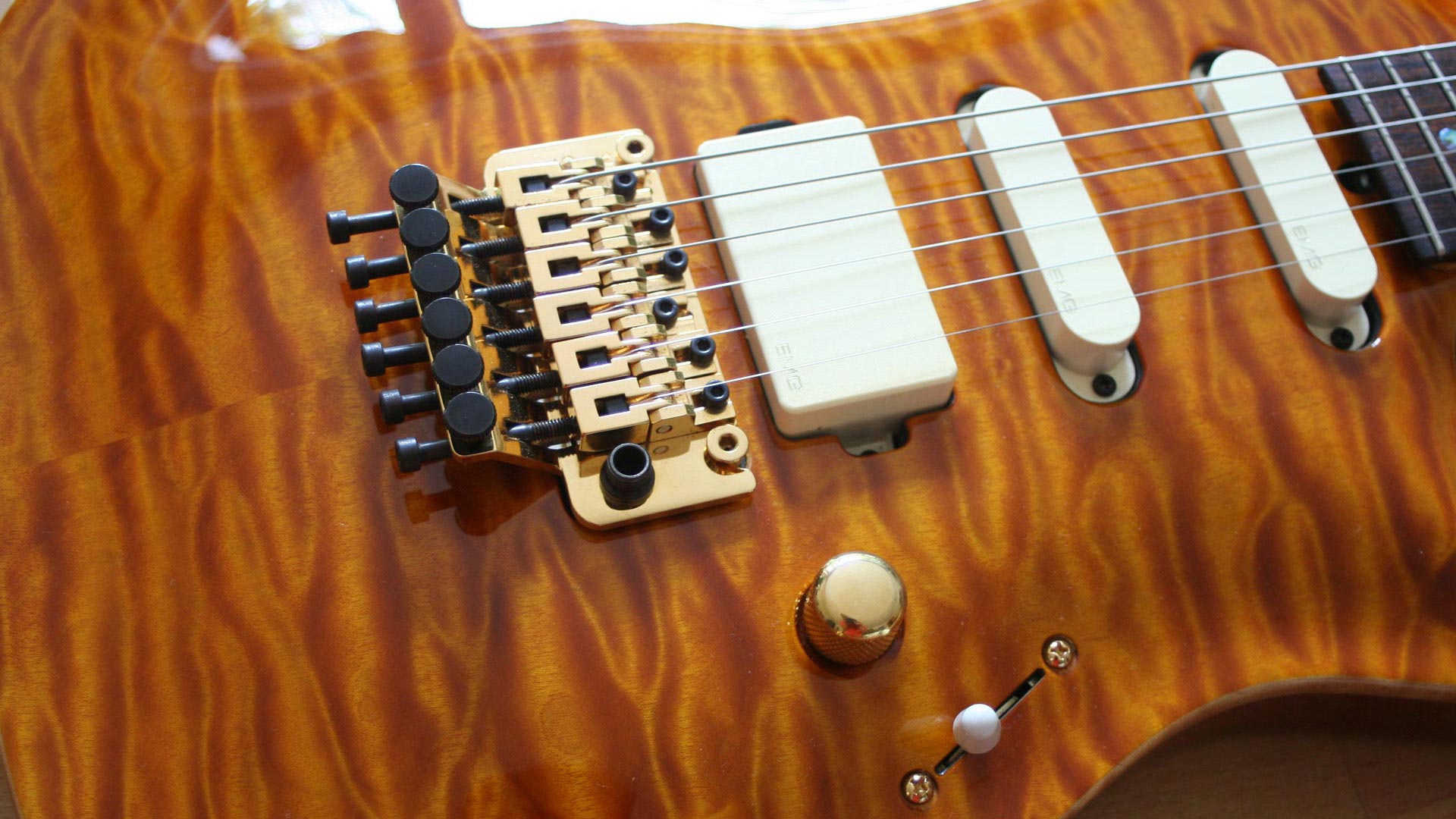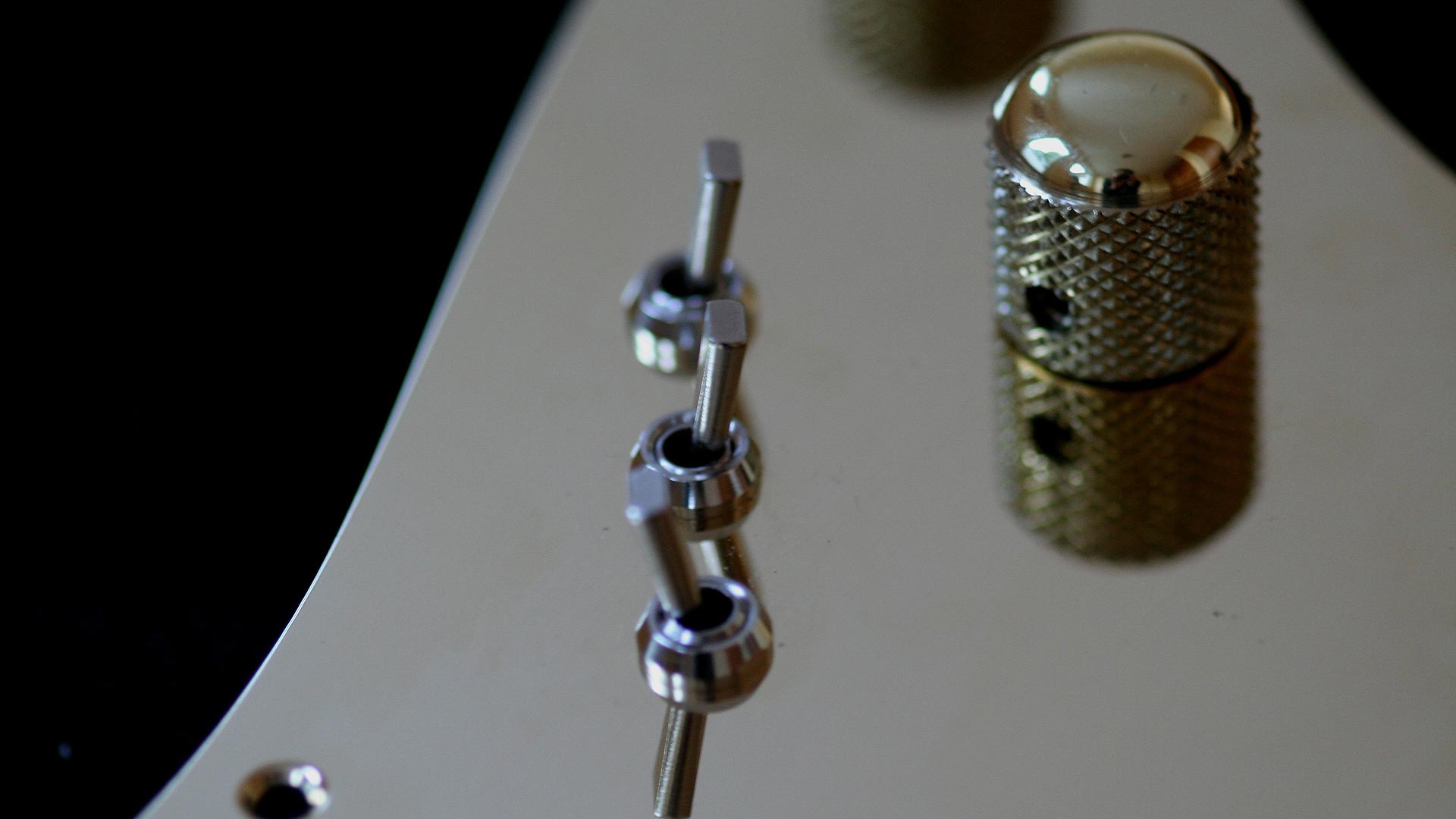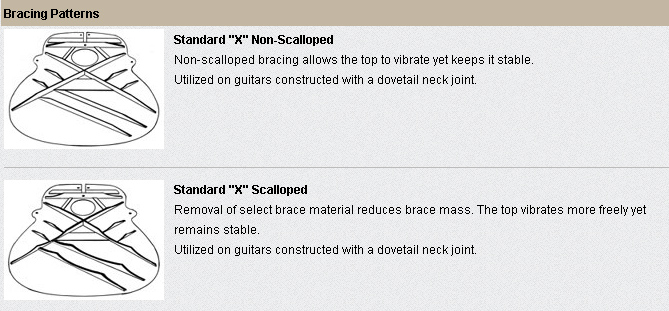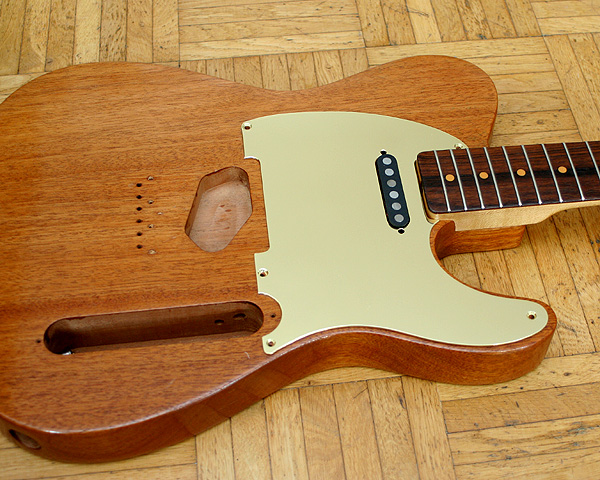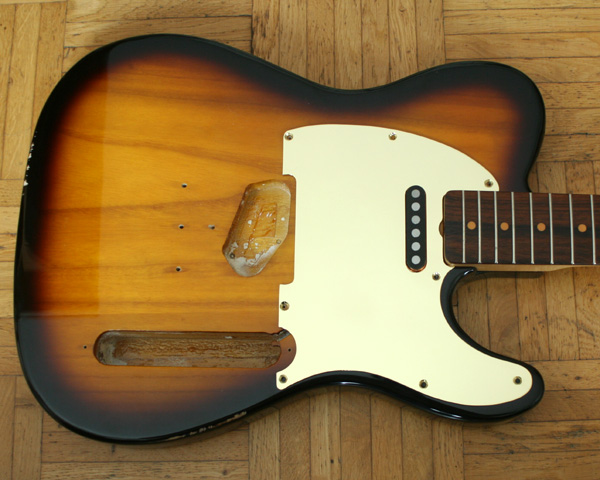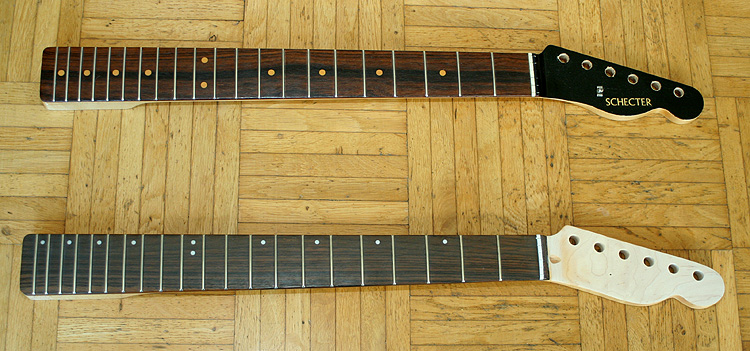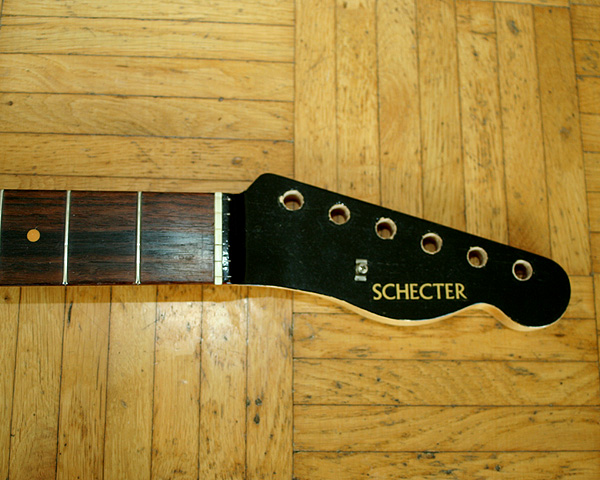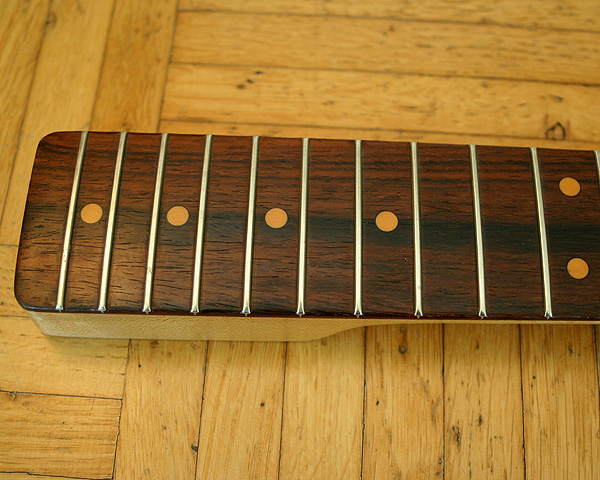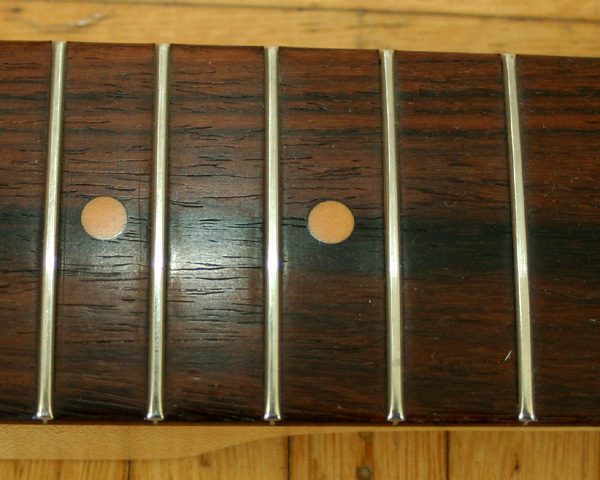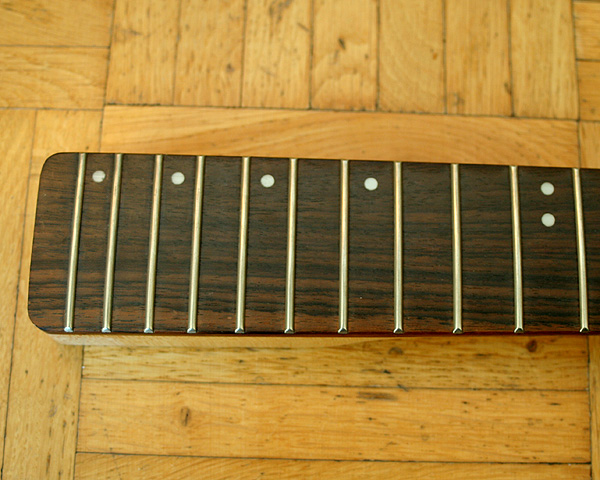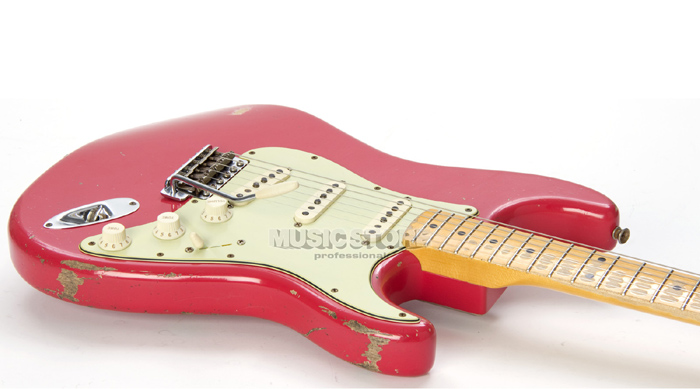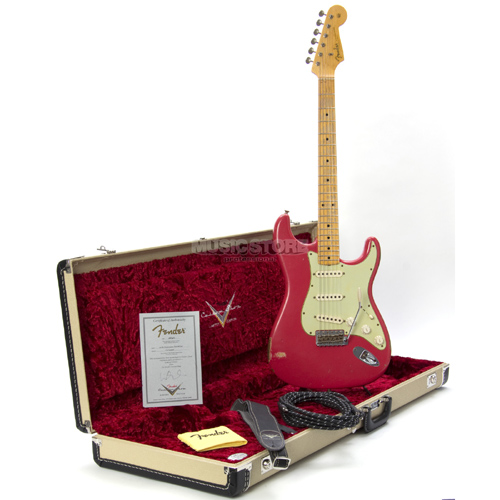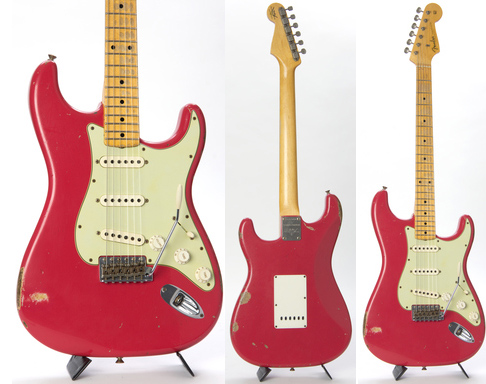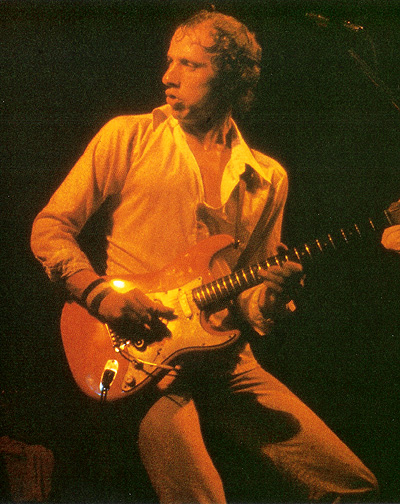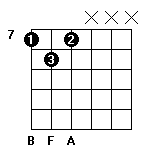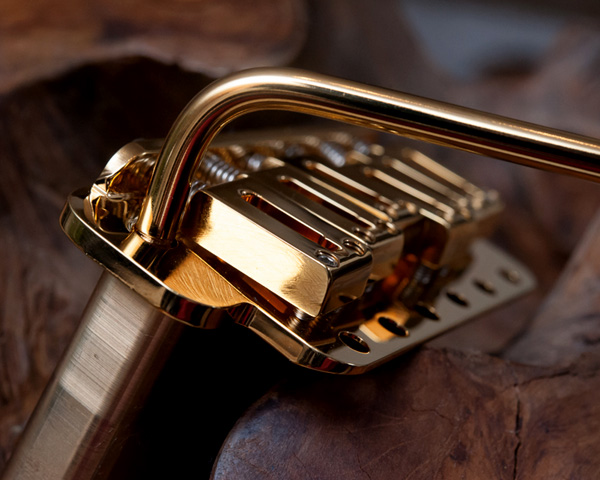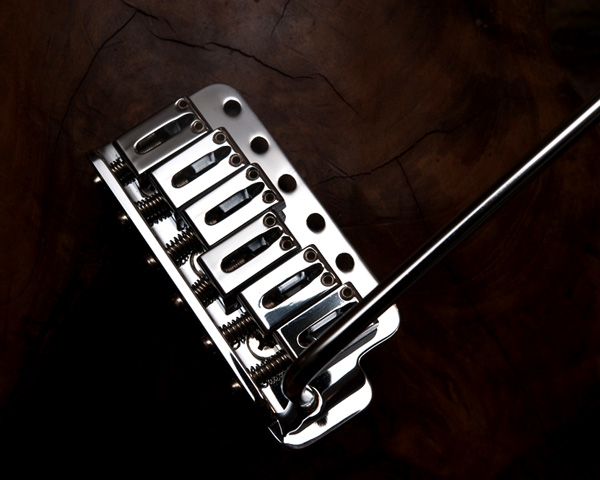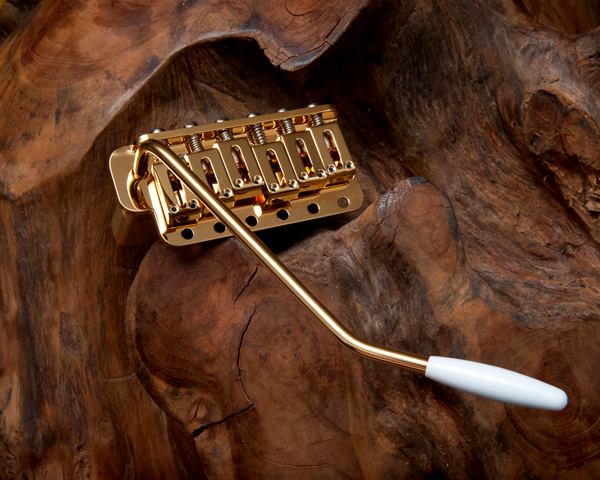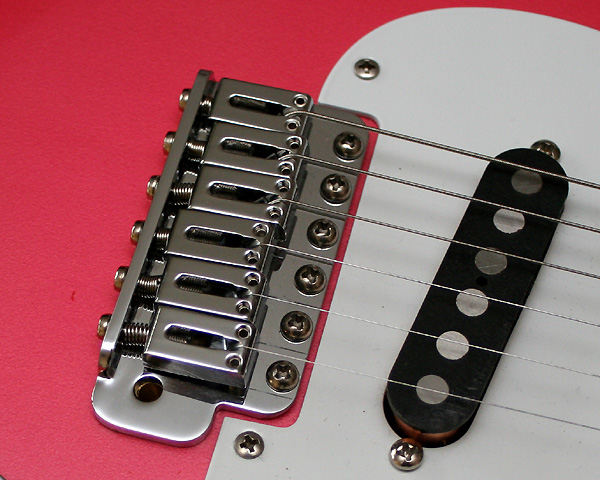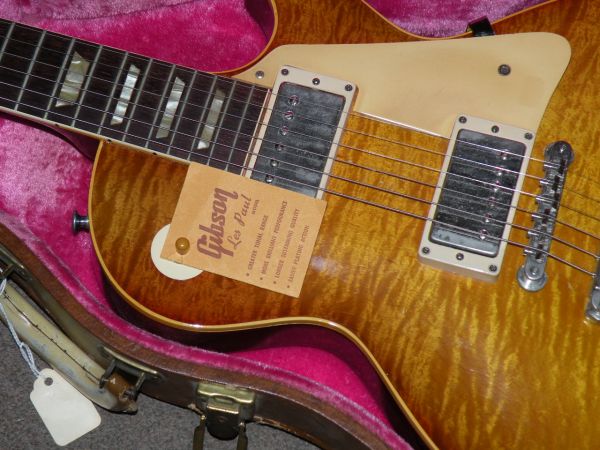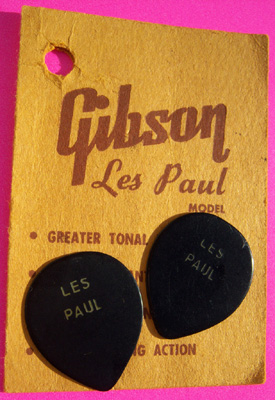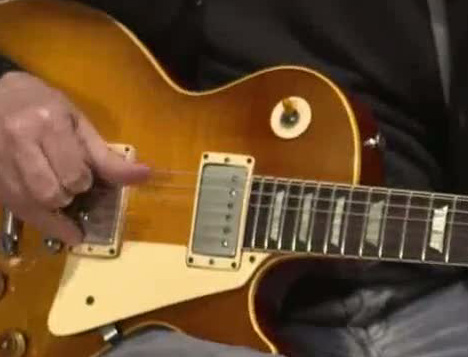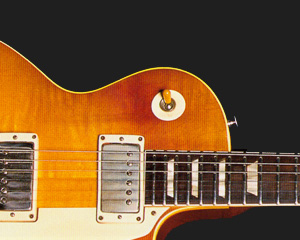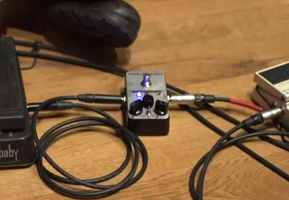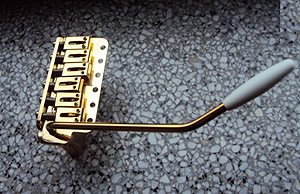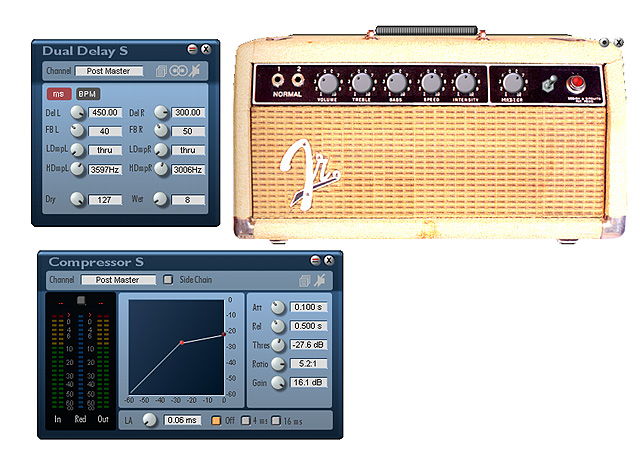Mark Knopfler’s Martin Acoustic Guitars – Signature, Vintage, different models
Mark Knopfler played a lot of different acoustic guitars in his career: different borrowed ones on the first Dire Straits albums (e.g. a David Russel Young on Love over Gold, or a Greco on Bob Dylan’s Infidels), different Ovations (e.g. Custom Legend, Adamas), Gibsons (e.g. J45, or a Southern Jumbo), Guild, and many more. These days he uses mainly Martins on stage, and also a lot in the studio.
If you watched the promo video shootage that came with some editions of Mark’s latest Privateering double CD, you will have noticed a vintage Martin D18 acoustic guitar on which he played the song Privateering in the control room of his British Grove studio. I cannot tell when he acquired this valuable guitar but I guess it is a rather late addition to his guitar collection. Unfortunately I don’t have any details other than what we can see in this video, but with this article I am trying to put together some general info not only on on this model, or his signature Martins, but also on vintage Martin acoustic guitars in general.
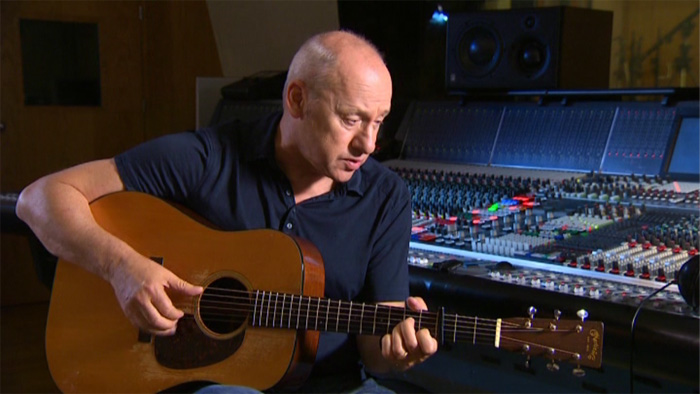
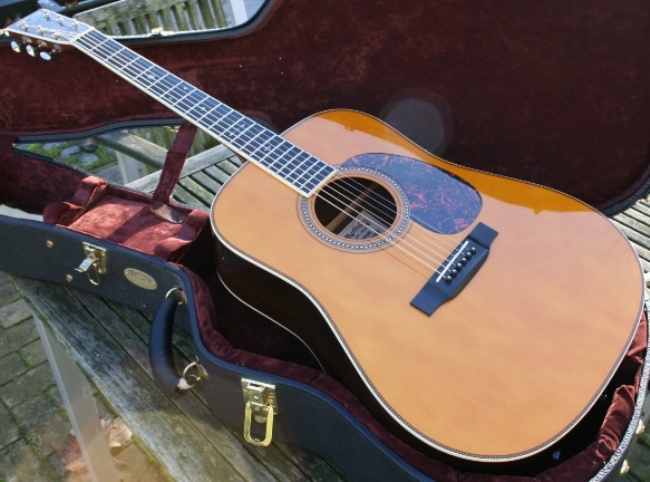
Body size
The D in a model name like D18 or D28 stands for ‘dreadnought’, and this refers to body size, or the ‘style’ of the guitar. In fact the prefix – like the D in D18, or the 000 in something like 000-18 – is a code for the body size. There are quite a few different sizes available, and even more in the past, but the most important ones might be – from small too large – 0, 00, 000, D, and J, with J for Jumbo being one of the largest. You will find different notations for the small ones, written as O (‘oh’) or 0 (‘zero’). What you say is ‘Oh’ – like ‘triple-Oh’ for 000 – but as Martin themselves use the number and not the letter on their website, I guess this is the ‘official’ version.
In the past the guitars were 12-fret models, but in the late 20ies of the last century Martin introduced the 14-fret style. This means the neck/body joint is at the 12th or at the 14th fret, with the latter ones having a shorter body for this reason. There is a nice overview on the different body sizes here on the Martin website.
The letter H before the body size stands for ‘herringbone’ binding, a special binding made of different woods in the past that was later replaced with a plastic binding but was reissued for several models.
The one seen on Privateering – also used for e.g. Dream of the Drowned Submariner – is a D18. Another dreadnought – with the herringbone binding – is his HD-40MK signature model. The other signature model – the ‘Ragpicker’ is a 000-40MK. The smaller bodies produce a slimmer bass and are ideal for fingerpicking. The one Mark played a lot in the late 80ies/early 90ies that was build by his friend Steve Phillips , was also a copy of 12th-fret 000.
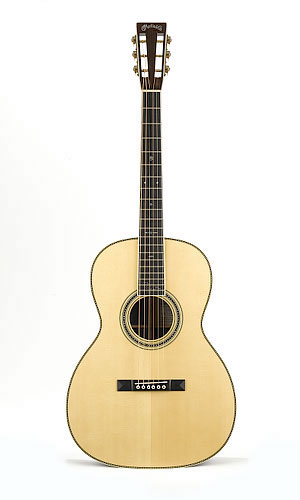
Woods
The suffix number has to do with the woods used, and with various construction details. Generally the higher the number, the more expensive the guitar. Here are some examples:
15: Top, back, and sides are mode of mahogany. The fingerboard and bridge are rosewood. No binding.
18: Mahogany back and sides but the top is spruce. Dark binding. The fretboard and bridge on early models was ebony, from the ’50s on rosewood.
28: The back and sides are rosewood with a spruce top, bound ebony fretboard and bridge . Early guitars, before 1947, came with the herringbone wood border around the top, which was later changed to alternating layers of black and white plastic . The herringbone binding was reintroduced in 1976 with the production of the HD-28 (H for for herringbone).
40 – Rosewood back and sides witha spruce top, ebony fingerboard, all kind of fancy ornamentation, e.g. a mother of pearl C.F. Martin Script Logo Inlay
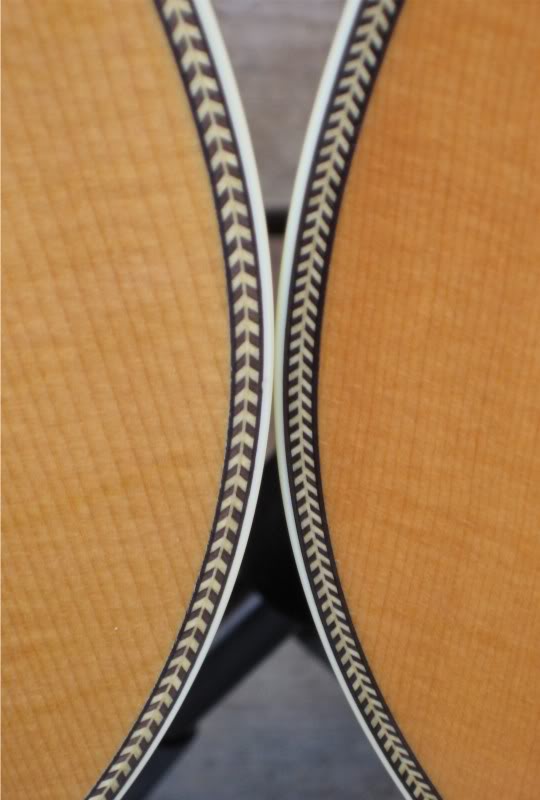
The bracing
One important constructional and tonal aspect of Martin guitars is the special kind of bracing. Martin made the X-bracing famous, which “consists of two braces forming an X shape across the soundboard below the top of the sound hole. The lower arms of the X straddle and support the ends of the bridge. Under the bridge is a hardwood bridge plate which prevents the ball end of the strings from damaging the underside of the soundboard. Below the bridge patch are one or more tone bars which support the bottom of the soundboard” (from Wikipedia). Better check out the picture…
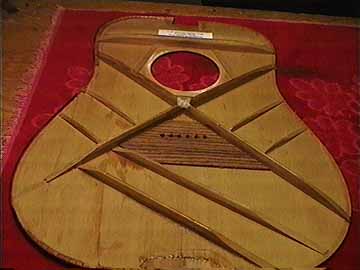
Here is some info from the Martin website that explains the standard X-bracing and the scalloped X-bracing, as we find it on the MK signature models:
